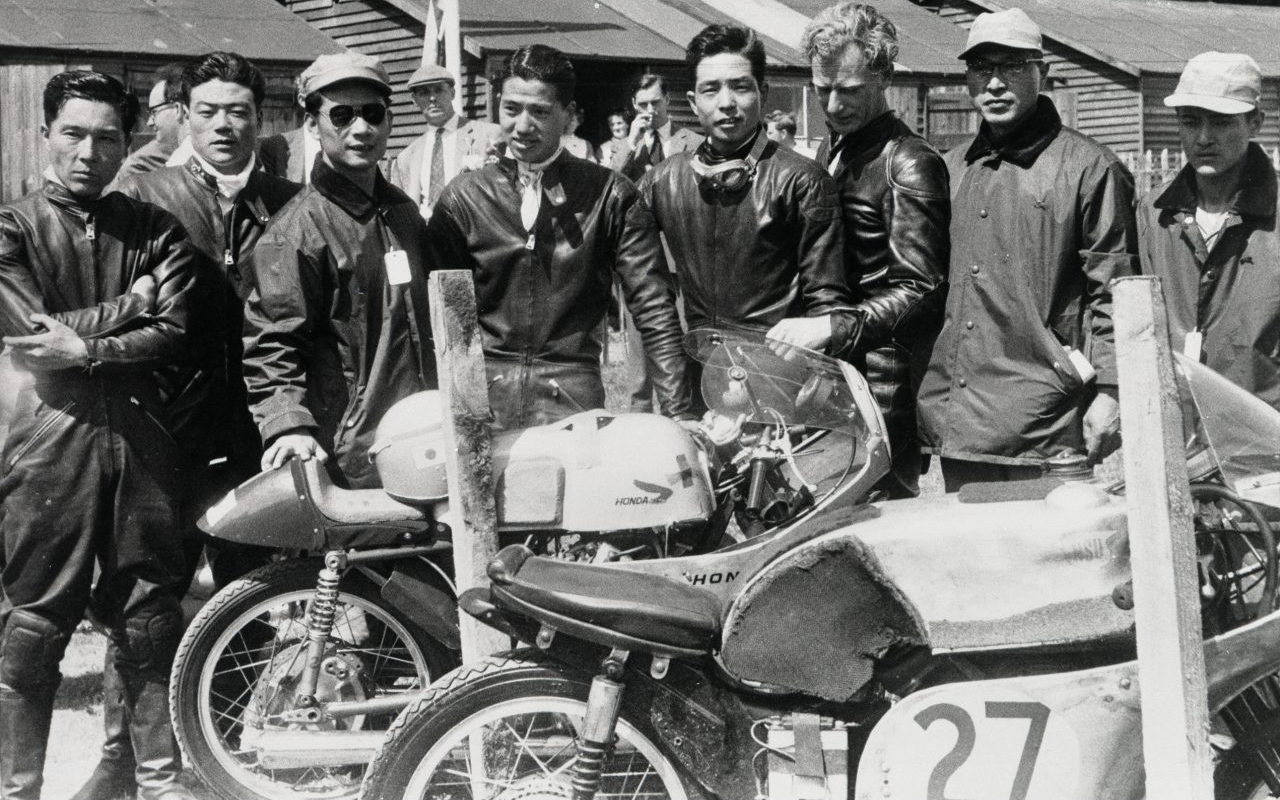No other manufacturer has made an entry into motorcycle Grand Prix racing quite like Honda.
In June 1959 Honda entered its first World Championship race, the Isle of Man Ultra-Lightweight TT. In 1960 Honda contested its first World Championship season, achieving its first podiums. In 1961 Honda scored its first Grand Prix victories and took the 125 and 250 World Championships. By the end of 1967 the company had won 138 GP races and 34 riders and constructors World Championships across all five categories: 50cc, 125cc, 250cc, 350cc and 500cc.
This unique achievement was inspired by one man: Soichiro Honda, who founded the Honda Motor Company in 1948.
Honda-san had a vision. At a time when Japanese motorcycles were unheard of in Europe he knew he had to conquer the European racing scene to make Honda a global force. And he was in no mood for hanging around.
In the spring of 1954, fewer than six years after he had established his company, he made this announcement. “My childhood dream was to be a motorsport World Champion with a machine built by myself,” he wrote. “I have decided to compete in the Isle of Man TT races… This aim is a difficult one, but we have to achieve it to test the viability of Japanese industrial technology, and to demonstrate it to the world… I here avow my definite intention that I will participate in the TT races and I proclaim with my fellow employees that I will pour in all my energy and creative powers to win.”
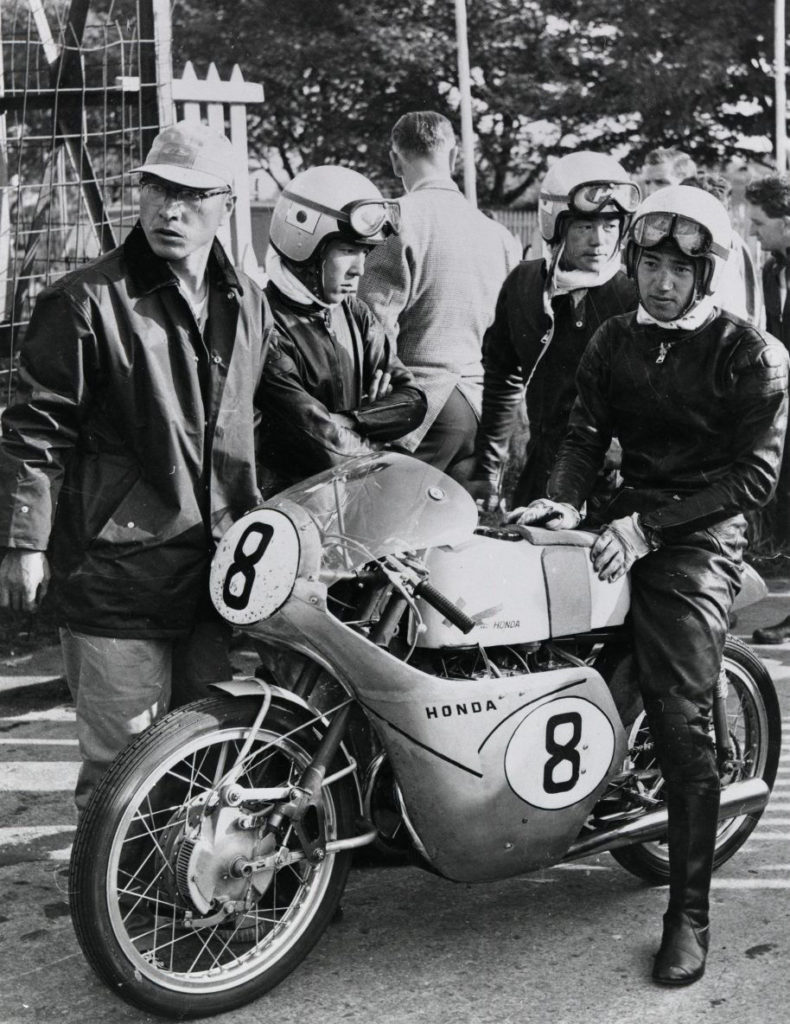
That summer Honda-san travelled to the Isle of Man TT, at that time the biking world’s biggest racing event. His aim was to examine the machinery of his would-be rivals. And he was in for a nasty shock.
“We were astonished that the motorcycles were so much more powerful than we had imagined,” he wrote many years later.
Honda-san returned to Japan to develop a motorcycle fast enough to compete at the TT. Five years later he sent a small team of riders and engineers to the Isle of Man where Honda took the team prize in its first World Championship race, on June 3, 1959.
This was an extraordinary performance, considering that the TT was Honda’s first road race, because most racing in Japan took place on dirt roads. Indeed when the team arrived on the Isle of Man they had to adapt Honda’s 125cc RC142 machines, which had been equipped for racing on the dirt, not asphalt.
Not only that, Honda’s riders had spent the previous few months watching videos and reading guides to learn the full 37.75-mile Mountain course. Only when they got to the Island did they discover that the 125cc Ultra-Lightweight race would take place on a different circuit, the Clypse course!
Honda’s presence on the Isle of Man created a sensation because European motorcyclists had never seen Japanese motorcycles before. Some fans weren’t convinced by Honda’s first attempt at a GP bike – a twin-cylinder four-stroke that made 18 horsepower, good for a top speed of around 180kmh/110mph.
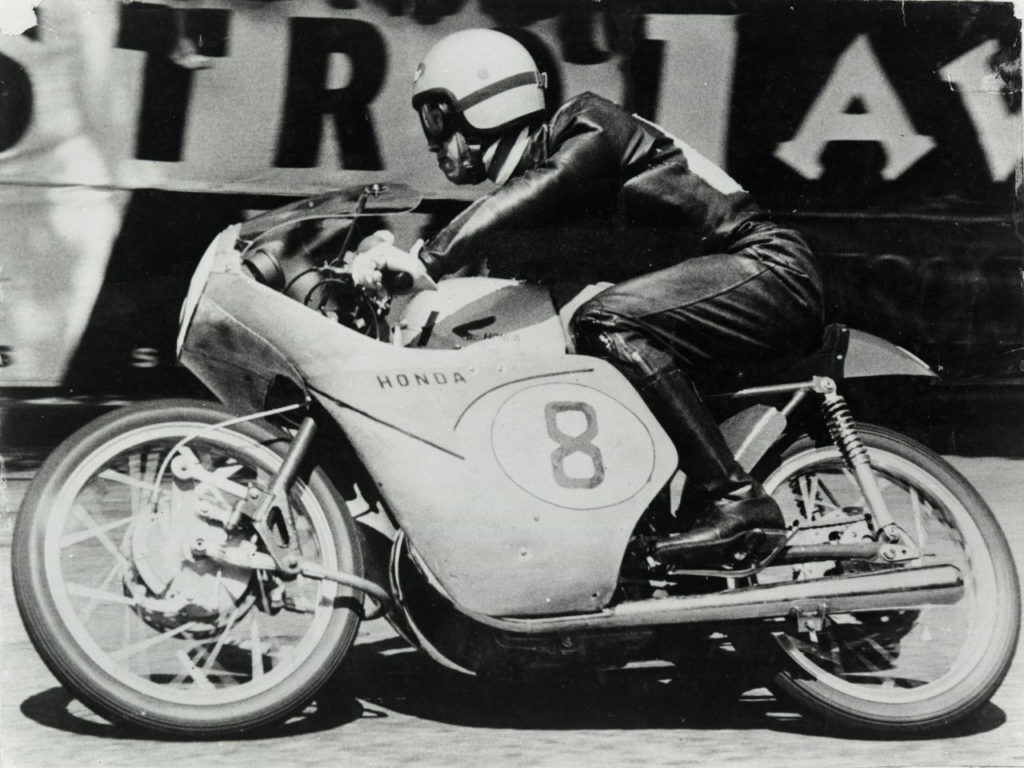
However, the team’s debut race performance – Naomi Taniguchi finished in sixth place, Giichi Suzuki in seventh, Teisuke Tanaka in eighth and Junzo Suzuki in 11th – confirmed that Honda knew what it was doing. One onlooker – up-and-coming Australian GP rider Tom Phillis – was so impressed by the team’s scrupulous efficiency that he wrote a letter to Honda in Japan, seeking a ride for the 1960 season.
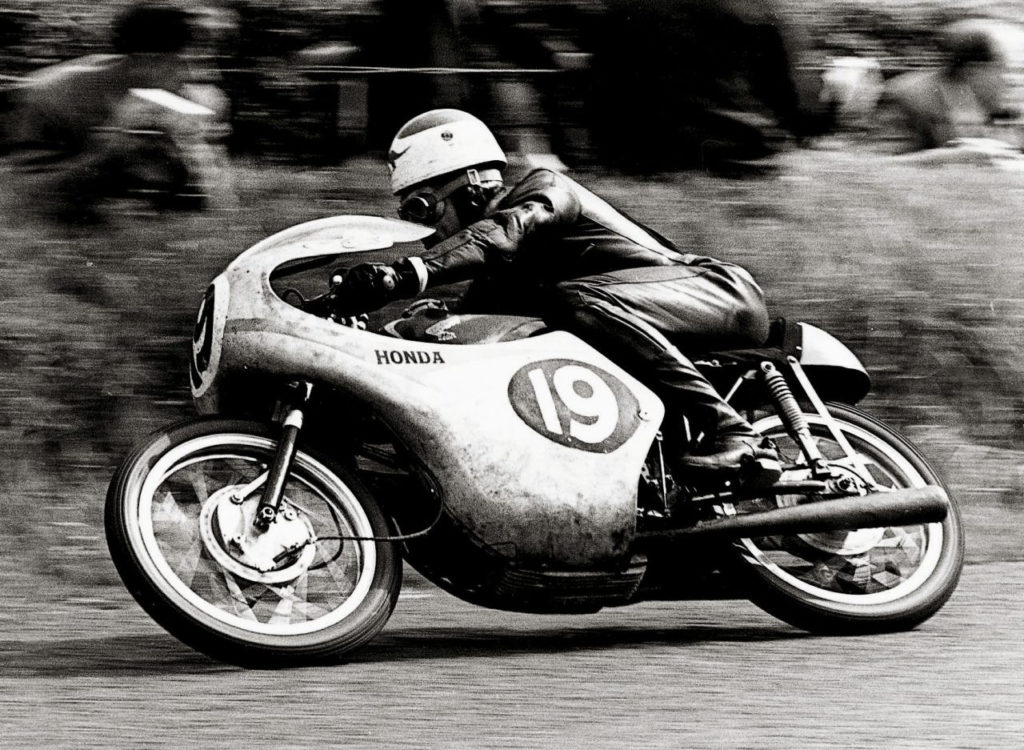
The following spring Phillis became Honda’s first non-Japanese World Championship rider and was amazed at the progress Honda had made with its machines. In August he scored his first World Championship podium when he rode an RC161 four-cylinder 250 to second place at the Ulster GP. Two weeks before that Kenjiro Tanaka had made history by taking Honda’s first Grand Prix podium, also on an RC161, at the West German GP.
Honda’s rapid rate of improvement continued into 1961 when Phillis took the company’s first Grand Prix victory in the season-opening 125cc Spanish GP. Three weeks later Kunimitsu Takahashi won Honda’s first 250cc victory at Hockenheim.
Honda dominated both classes in its second season of world-class racing. In September 1961 Honda-san and his wife Sachi flew to Sweden where they witnessed Mike Hailwood take Honda’s first World Championship, in the 250 class. Four weeks later Phillis secured the 125cc title in Argentina. Honda also took its first constructors crowns, in both categories.
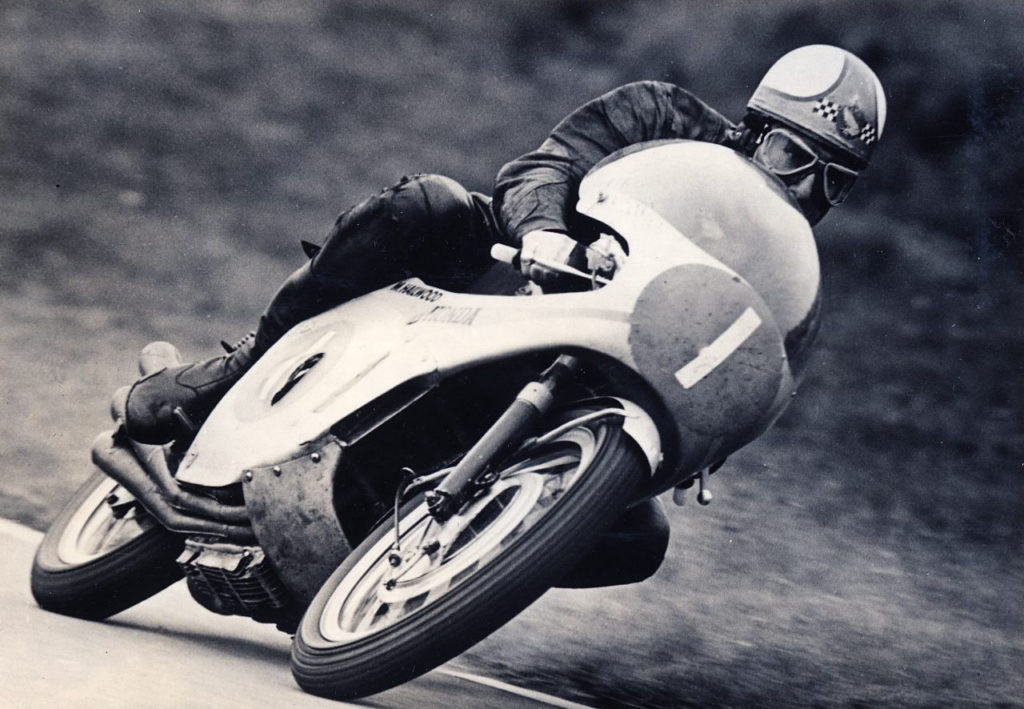
From this moment Honda became the dominant force in Grand Prix racing. The next six seasons became an enthralling battle between Honda’s four-strokes and rival two-stroke machines. This technological race produced some of the most fabulous motorcycles ever to grace a racetrack: Honda’s six-cylinder 250, five-cylinder 125 and twin-cylinder 50.
Honda has always considered racing to be its laboratory on wheels and perhaps this was never truer than in the 1960s, when the company was relatively new to the game. The technological concept behind these three machines was the same. Honda needed more rpm to defeat the two-strokes, so engineers shortened engine stroke and multiplied the number of cylinders to raise rpm. At the same time they used four valves per cylinder, which fitted comfortably in the wider bores, while the lighter weight of the smaller valves solved high-rpm valve problems. Honda had hit upon a potent engine design.
In 1962 Honda contested the new 50cc World Championship, adding 50s to its efforts in the 125, 250 and 350 classes. At the opening Spanish GP in Barcelona Honda’s first 50 struggled, so Honda engineers went to work, in the most amazing way.
Honda riders told their engineers that the bike needed more gears than its original six. A few weeks later the riders arrived in Clermont-Ferrand for the French GP to find new engines with eight-speed gearboxes. Another two weeks later at the TT and the bikes were equipped with nine-speed gearboxes.
Such a rate of development was unheard of in Europe. And all this despite the small matter of transporting equipment from Japan. This entailed a gruelling flight route from Tokyo’s Haneda airport to Europe, via Hong Kong, Bangkok, Calcutta, Karachi and Beirut.
At the end of 1962 Honda replaced its 50cc single with a completely new twin-cylinder machine. The twin won the 50cc riders and constructors World Championships in 1965. The final iteration of the 50, which won the 1966 constructors crown, had a bore and stroke of 35.5 by 25.14mm, revved to 22,500rpm and produced 14 horsepower. That’s a specific power output of 280 horsepower per litre!
Although the 50cc was a miniature marvel it made fewer headlines than its bigger brothers, the 250 six and 125 five.
Honda’s 250 six is still revered as one of the most exciting Grand Prix bikes of all time – the sound of its engine through six open pipes was music to race fans of the 1960s.
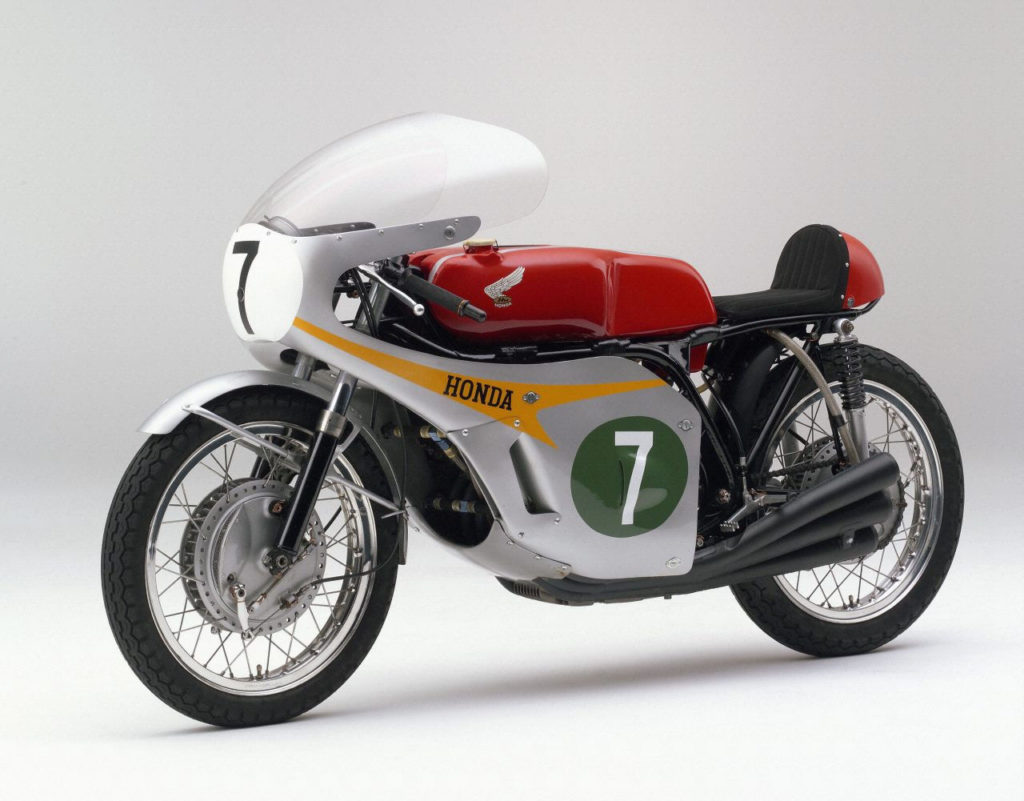
The machine was first unleashed at Monza in September 1964, when Honda flew one bike to Europe across three seats of a passenger plane, because they had run out of time to send the bike by air freight.
The six was remarkable in so many ways. The 24-valve, 39 x 34.8mm engine was barely wider than its four-cylinder predecessor and revved past 18,000rpm, producing 60 horsepower for a top speed of over 240kph/150mph.
Its crankshaft – almost 35cm long– ran with one-piece conrods and tiny flywheels, with most of the mass concentrated towards the centre, effectively halving the crank’s vibrating length.
The engine was bullet proof, even when Honda built a bored-and-stroked 297cc version, which took six 350cc riders and constructors World Championships between 1965 and 1967.
The five-cylinder 125 shared the 50cc twin’s engine measurements and made a shrieking noise, a couple of octaves above the 250’s. This engine also made its maximum power at over 20,000rpm, so it demanded huge skills from its riders, who played wonderful tunes with its eight-speed gearbox.
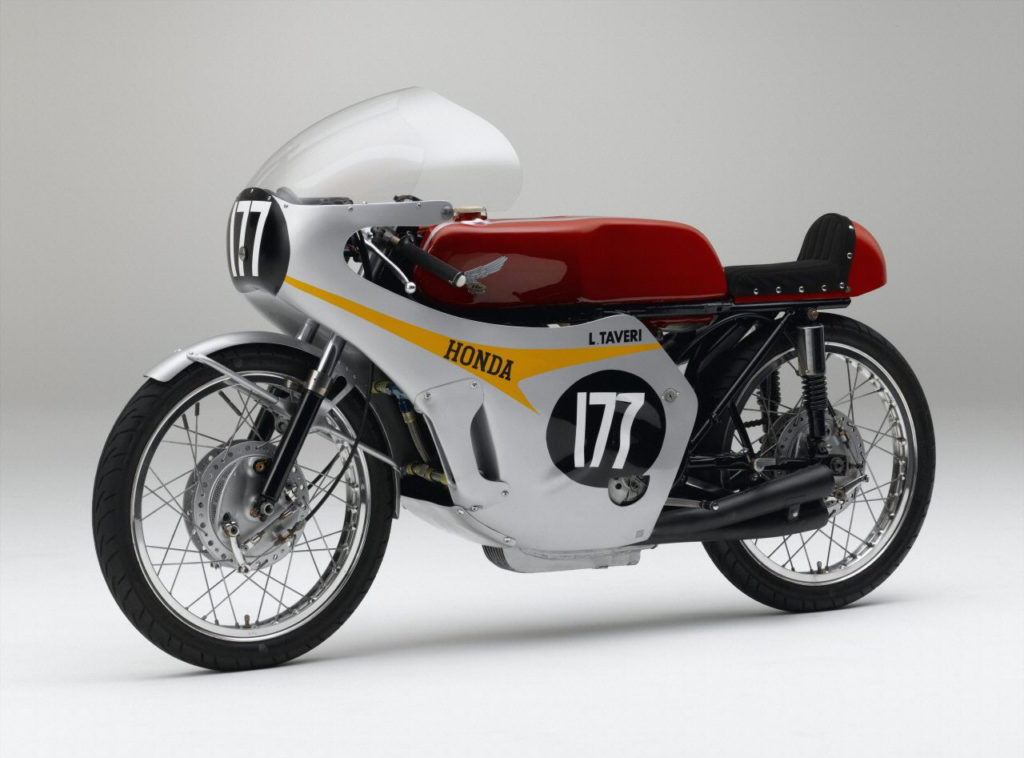
Engine internals of both the 125 five and 50 twin were so tiny that mechanics used tweezers to fit valve collets and abrasive stones to grind tappets to a valve clearance of just 0.1778mm. The task of setting up the carburation was also extremely time-consuming: five carburettors with five jets each (main petrol and air jets, intermediate petrol and air jets and a slow-running air jet) plus three different lengths of inlet rubbers.
By 1965 Honda had conquered the 50cc, 125cc, 250cc and 350cc categories, leaving the company one final target: the premier 500cc World Championship.
Honda’s first premier-class GP bike was perhaps less exotic than its smaller stablemates – the RC181 had four cylinders – but was immediately successful. In its first race the RC181 took a dominant victory at the 1966 West German GP, with Rhodesian rider Jim Redman on board.
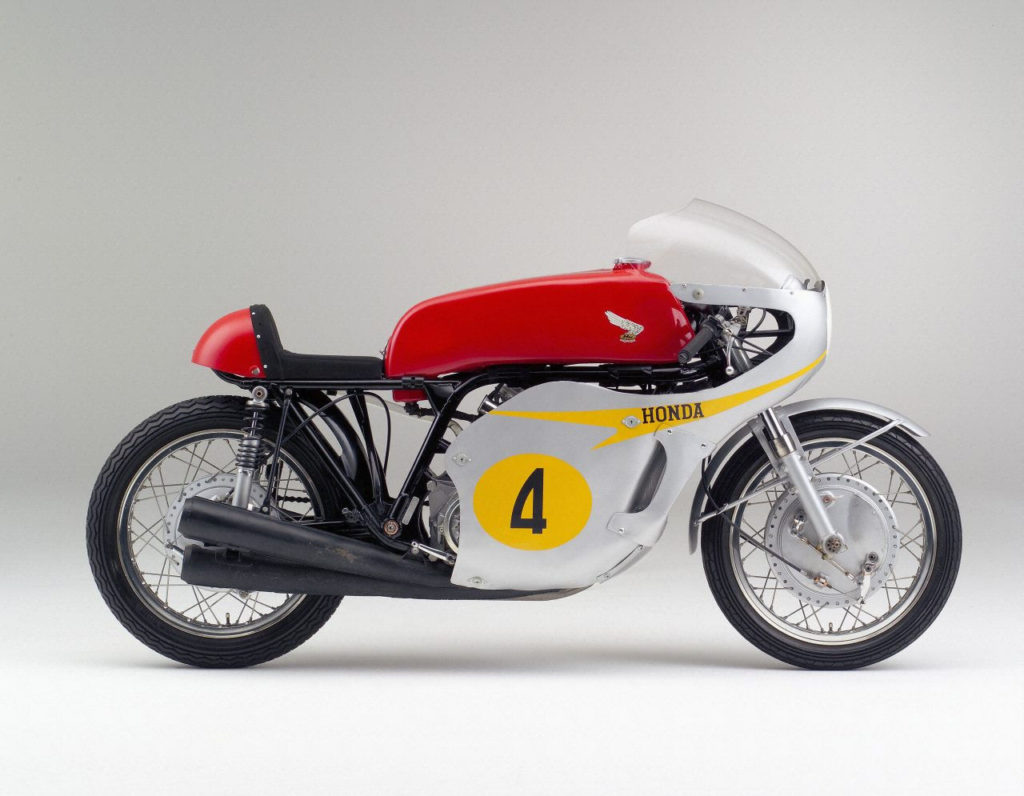
Redman also won the second race at Assen and might have gone on to win the 500cc title at Honda’s first attempt, but he crashed out of the third race – around the terrifyingly fast Spa-Francorchamps street circuit – and sustained career-ending injuries. Hailwood, who had been concentrating on the 250 and 350 classes, took over Redman’s bikes to contest the last five 500 races of the nine-race season. He won three, but it wasn’t quite enough to take the title.
However, the five victories achieved by Redman and Hailwood did win the 500cc constructors title at Honda’s first attempt. And this gave the company a full-house of constructors World Championship in the 50, 125, 250, 350 and 500 categories, an achievement unmatched by any other manufacturer.
The 1967 Grand Prix season turned out to be Honda’s last for more than a decade. Once again the company won the 250 and 350cc titles, but the 500 eluded its riders and engineers. Hailwood finished the season equal on points with MV Agusta’s Giacomo Agostini, but points-scoring system gave the title to Ago.
Honda withdrew from motorcycle GP racing to focus its efforts on the Formula 1 car World Championship. Honda’s first F1 cars were powered by engines designed by the same engineers that had created the greatest 250 six and other machines.
There is no doubt that the 1960s was a very special time for Honda and for motorcycle racing. The duel for supremacy between four-stroke and two-stroke precipitated a technology race the like of which the sport has never seen, before or since.
Engineers and riders were pushed to their limits as they fought for victory, both in the design shop and on the racetrack. The people who were involved in that contest remember the 1960s as a golden age, when anything seemed possible. After all, man was on its way to the moon!
Honda returned to Grand Prix racing in 1979 and won its first premier-class World Championship in 1983. In 2001 the company became the first manufacturer to achieve 500 Grand Prix victories. The total now stands at more than 800 victories, plus 133 riders and constructors World Championships, including a clean sweep of the last four MotoGP riders and constructor titles, during which time Marc Marquez (Repsol Honda RC213V) became Honda’s most successful premier-class rider.






